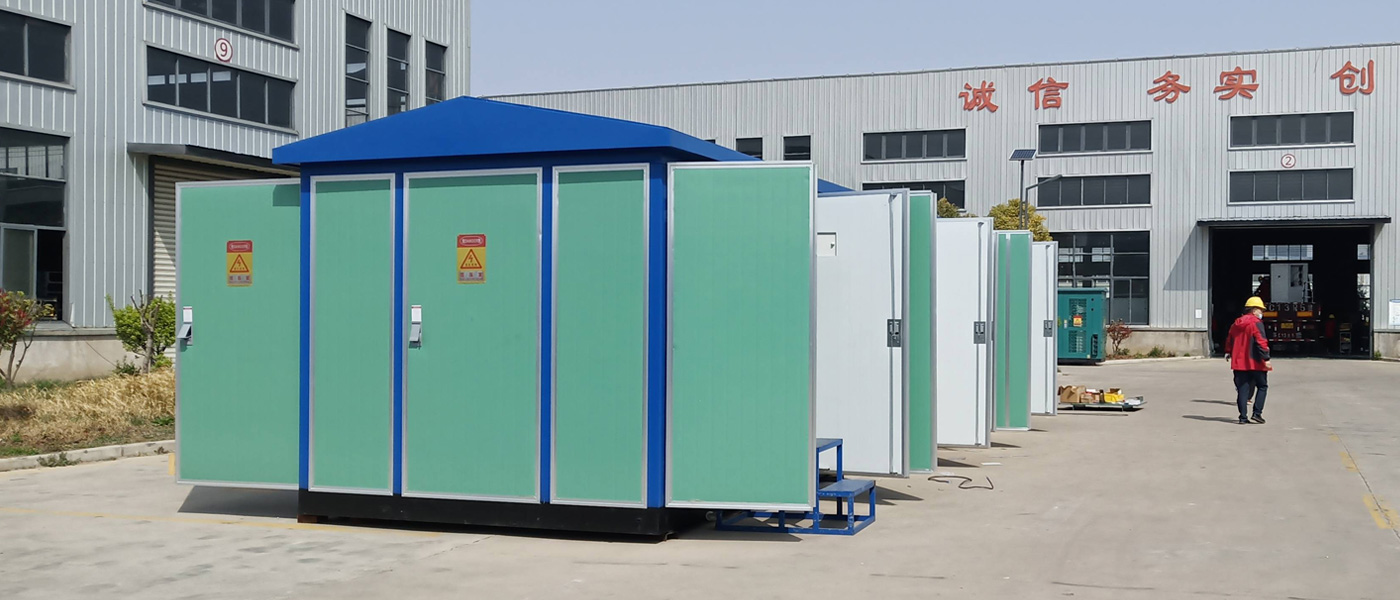What is prefabricated substation?
2024-06-12

Prefabricated substations, a concept that has been in use since the early 20th century, are pre-assembled electrical substations that are manufactured off-site and then transported to the installation location for quick and easy deployment. These substations are designed to provide a compact and efficient solution for power distribution in various industrial, commercial, and utility applications. In this article, we will explore the definition, product features, working principle, technical parameters, working environment, internal structure, and installation methods of prefabricated substations.
Definition:
Prefabricated substations, also known as prefabricated electrical substations or packaged substations, are self-contained units that integrate various electrical components, such as transformers, switchgear, protection devices, and control systems, into a single enclosure. These substations are designed to be compact, modular, and easily transportable, offering a convenient solution for power distribution needs in diverse settings. For instance, in the construction industry, prefabricated substations are often used to power temporary facilities on job sites.
Product Features:
Prefabricated substations, the epitome of adaptability, come with a range of features that make them a popular choice for power distribution applications. Some common product features include:
- Compact Design: Prefabricated substations are designed to occupy minimal space, making them suitable for installation in areas with limited real estate.
- Modular Construction: These substations are typically built using modular components, allowing for easy customization and scalability to meet specific project requirements.
- Integrated Components: The substation enclosure houses all essential electrical components, including transformers, switchgear, protection devices, and control systems, providing a complete and self-contained solution.
- Mobility: Prefabricated substations are designed for easy transportation to the installation site, enabling rapid deployment and installation.
- Customization Options: Manufacturers offer customization options for voltage levels, configurations, and additional features to meet the unique needs of different applications.
Working Principle:
Prefabricated substations function as centralized points for receiving high-voltage power from the grid, transforming it to lower voltages suitable for local distribution, and then distributing the power to various loads within the facility. The working principle involves the following key steps:
- Power Reception: High-voltage power from the grid is received by the substation through incoming feeders or cables.
- Transformation: The incoming high-voltage power is transformed to lower voltage levels using the integrated transformers within the substation.
- Distribution: The transformed power is then distributed to various loads within the facility through outgoing feeders or cables.
Technical Parameters:
The technical parameters of prefabricated substations vary based on the specific requirements of the application. Some common technical parameters include Voltage Ratings, which determine the maximum voltage the substation can handle; Power Capacity, which indicates the maximum power the substation can distribute; and Protection and Control Systems, which ensure the safe and reliable operation of the substation.
- Voltage Ratings: Prefabricated substations are available in various voltage ratings, including medium voltage (up to 36 kV) and low voltage (typically 400V).
- Power Capacity: The power capacity of prefabricated substations can range from a few hundred kVA to several MVA, depending on the application’s power distribution needs.
- Protection and Control Systems: These substations are equipped with advanced protection and control systems to ensure safe and reliable operation, including circuit breakers, relays, and monitoring devices.
Working Environment:
Prefabricated substations are designed to operate in a wide range of working environments, including industrial facilities, commercial buildings, utility substations, and remote locations. The working environment considerations for these substations include:
- Temperature: The substations are designed to operate within specified temperature ranges, with options for additional cooling or heating systems in extreme environments.
- Humidity and Dust: The enclosure design protects against moisture, dust, and other environmental factors to ensure the reliable operation of electrical components.
- Outdoor Installation: Some prefabricated substations are suitable for outdoor installation, requiring weatherproof enclosures and additional protection against environmental elements.
Internal Structure:
The internal structure of prefabricated substations is designed to accommodate various electrical components while ensuring efficient operation and easy maintenance. The key components and internal structure of these substations include:
- Transformers: Integrated transformers for voltage transformation and power distribution.
- Switchgear: Electrical switchgear for controlling and isolating electrical circuits.
- Protection Devices: Relays, circuit breakers, and other protection devices to safeguard the electrical system from faults and overloads.
- Control Systems: Monitoring and control systems for managing the substation’s operation and ensuring safety and reliability.
Installation Method:
The installation of prefabricated substations involves several key steps to ensure proper deployment and integration into the electrical distribution system. The installation method typically includes the following stages:
- Site Preparation: The installation site is prepared to accommodate the prefabricated substation, including the provision of a suitable foundation and access to electrical connections.
- Transportation and Positioning: The prefabricated substation is transported to the installation site and positioned using appropriate lifting and positioning equipment.
- Electrical Connections: The substation is connected to the incoming and outgoing electrical feeders, as well as to the grounding system and any auxiliary systems.
- Testing and Commissioning: The substation undergoes testing and commissioning to verify its proper operation and integration into the overall electrical distribution system.
Conclusion
In conclusion, prefabricated substations, the epitome of reliability, offer a convenient and efficient solution for power distribution needs in various industrial, commercial, and utility applications. With their compact design, integrated components, and modular construction, these substations provide a trustworthy and easily deployable option for transforming and distributing electrical power. Understanding the definition, product features, working principle, technical parameters, working environment, internal structure, and installation methods of prefabricated substations is essential for selecting the right solution to meet specific power distribution requirements.





